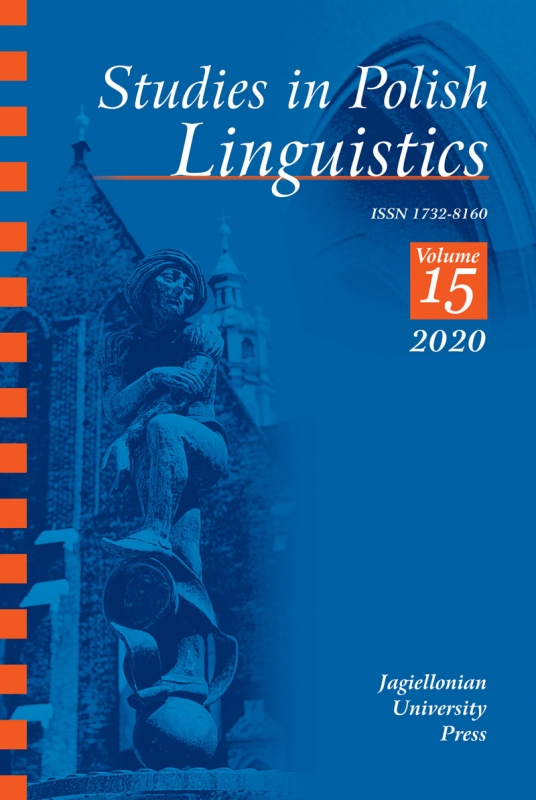Paucal Quantifiers and Diminutive Morphology in the Light of Numeralization: The Case of Polish garść ‘handful’ and garstka ‘handful.dim’
Paucal Quantifiers and Diminutive Morphology in the Light of Numeralization: The Case of Polish garść ‘handful’ and garstka ‘handful.dim’
Author(s): Damian HerdaSubject(s): Language and Literature Studies
Published by: Wydawnictwo Uniwersytetu Jagiellońskiego
Keywords: liczebniki nieokreślone / kodujące małą liczbę/ilość; numeralizacja (gramatykalizacja); deminutywizacja; studium korpusowe; język polskivague paucal quantifiers; numeralization (grammaticalization); d
Summary/Abstract: O ile zastosowanie morfologii deminutywnej w odniesieniu do rzeczowników konkretnych, przymiotników i przysłówków stopniowalnych, jak również interiekcji doczekało się już sporo uwagi ze strony polskich językoznawców, o tyle zdrabnianie form liczebników nieokreślonych pozostaje zjawiskiem słabo przebadanym empirycznie. Nadrzędnym celem niniejszego artykułu jest więc podjęcie pierwszego kroku do zmiany tego stanu rzeczy poprzez opis studium korpusowego liczebnika garść oraz jego formy deminutywnej garstka. Wyniki analizy łączliwości obu elementów potwierdzają hipotezę, zgodnie z którą deminutywizacja wzmacnia implikacje skalarne znumeralizowanej jednostki odnoszącej się pierwotnie do niewielkiej porcji substancji bądź zbioru elementów, co odzwierciedla znacznie wyższa frekwencja poświadczeń liczebnikowych wspomnianego deminutywu. Forma garstka przejawia ponadto istotnie silniejszą preferencję kolokacyjną względem rzeczowników żywotnych, co wskazuje, że deminutywizacja może nie tylko zintensyfikować ekspresywność kwantyfikatora wyrażającego małą liczbę lub ilość, ale także doprowadzić do istotnych zmian w jego dystrybucji. ABSTRACT: While the attachment of diminutive morphology to concrete nouns, gradable adjectives and adverbs, as well as interjections has already received a well-merited share of attention in Polish, diminutivization of vague quantifiers remains empirically understudied. The present paper takes a first step towards filling in this gap by reporting on a corpus-based investigation of the numeralized partitive garść ‘handful’ and its diminutive variant Garstka ‘handful.dim’. The results of a collocational analysis of both forms corroborate the hypothesis that diminutivization further enhances scalar implications inherent in the base ‘small size’ item, as reflected in the diminutive form’s significantly higher frequency of quantifier attestations. Apart from exhibiting a substantially greater proportion of quantifier uses, the latter element displays an overwhelming predilection for animate N2-collocates, which suggests that diminutivization may not only intensify a paucal quantifier’s expressivity but also lead to conspicuous changes in its distributional profile.
Journal: Studies in Polish Linguistics
- Issue Year: 15/2020
- Issue No: 2
- Page Range: 59-83
- Page Count: 25
- Language: English

